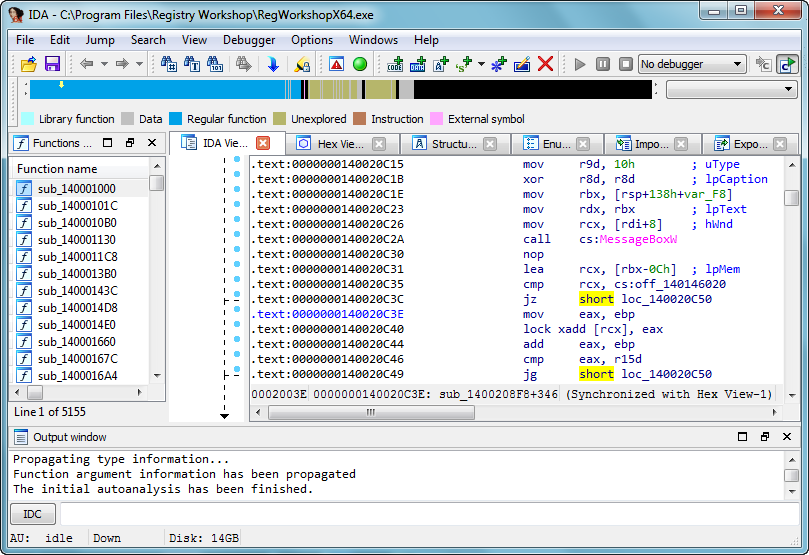Wi-Fi is essential to most Mac users, but what happens when your network gets sketchy? Apple's hidden Wi-Fi Diagnostics tool should help you improve Wi-Fi performance. Select Mac OS -> Application -> Command Line Tool. Select 'C++ stdc++' from the Type drop down box. Or, install Xcode, but first learn how to use g++ without the IDE. How to setup gdb and Eclipse to debug C++ files on macOS Sierra. Now you can use gdb for debugging files on your Mac. If you use Eclipse, follow the next step. 36 Replies to “How to setup gdb and Eclipse to debug C++ files on macOS Sierra” CP says: 6 November 2017 at 11:35. Top 10 DTrace scripts for Mac OS X Since version 10.5 “Leopard”, Mac OS X has had DTrace, a tool used for performance analysis and troubleshooting. It provides data for Apple’s Instruments tool, as well as a collection of command line tools that are implemented as DTrace scripts. Xcode is very simple. To start a C++ project do this: 1. Click 'Create new Project'. Click 'Application' OSX on the left side of the screen, and then click 'Command Line Tool' on the right.
I currently have Mac Sierra 10.12.3 and I had the surprise that Valgrind is not compatible despite their latest version.
I wanted to know if there was a solution to solve this problem or another debugger (gdb does not work either).
I prefer not to use XCode because I like to program with a terminal.
Thank you
1 Answer
Use LLDB as described in this article http://www.developerfiles.com/debugging-c-with-clang-compiler-and-lldb/
Not the answer you're looking for? Browse other questions tagged cmacosdebuggingvalgrind or ask your own question.
Installation
- Download Visual Studio Code for macOS.
- Double-click on the downloaded archive to expand the contents.
- Drag
Visual Studio Code.appto theApplicationsfolder, making it available in theLaunchpad. - Add VS Code to your Dock by right-clicking on the icon to bring up the context menu and choosing Options, Keep in Dock.
Launching from the command line
You can also run VS Code from the terminal by typing 'code' after adding it to the path:
- Launch VS Code.
- Open the Command Palette (⇧⌘P (Windows, Linux Ctrl+Shift+P)) and type 'shell command' to find the Shell Command: Install 'code' command in PATH command.
- Restart the terminal for the new
$PATHvalue to take effect. You'll be able to type 'code .' in any folder to start editing files in that folder.
Note: If you still have the old code alias in your .bash_profile (or equivalent) from an early VS Code version, remove it and replace it by executing the Shell Command: Install 'code' command in PATH command.

To manually add VS Code to your path, you can run the following commands:
Start a new terminal to pick up your .bash_profile changes.
Note: The leading slash is required to prevent $PATH from expanding during the concatenation. Remove the leading slash if you want to run the export command directly in a terminal.

Touch Bar support
Out of the box VS Code adds actions to navigate in editor history as well as the full Debug tool bar to control the debugger on your Touch Bar:
Mojave privacy protections
After upgrading to macOS Mojave version, you may see dialogs saying 'Visual Studio Code would like to access your {calendar/contacts/photos}.' This is due to the new privacy protections in Mojave and is not specific to VS Code. The same dialogs may be displayed when running other applications as well. The dialog is shown once for each type of personal data and it is fine to choose Don't Allow since VS Code does not need access to those folders. You can read a more detailed explanation in this blog post.
Updates
VS Code ships monthly releases and supports auto-update when a new release is available. If you're prompted by VS Code, accept the newest update and it will get installed (you won't need to do anything else to get the latest bits).
Note: You can disable auto-update if you prefer to update VS Code on your own schedule.
Preferences menu
You can configure VS Code through settings, color themes, and custom keybindings and you will often see mention of the File > Preferences menu group. On a macOS, the Preferences menu group is under Code, not File.
Next steps
Once you have installed VS Code, these topics will help you learn more about VS Code:
- Additional Components - Learn how to install Git, Node.js, TypeScript, and tools like Yeoman.
- User Interface - A quick orientation around VS Code.
- User/Workspace Settings - Learn how to configure VS Code to your preferences settings.
Common questions
Why do I see 'Visual Studio Code would like access to your calendar.'
Itool For Mac
If you are running macOS Mojave version, you may see dialogs saying 'Visual Studio Code would like to access your {calendar/contacts/photos}.' This is due to the new privacy protections in Mojave discussed above. It is fine to choose Don't Allow since VS Code does not need access to those folders.